A Throng of Spring Flowers at the Mt. Cuba Center
Beyond the Trilliums and Trout Lilies, Mt. Cuba Center was bursting with a multitude of spring blooms, mostly ephemerals. Below you’ll find just some of the many species we found (some of the IDs are shakier than others, corrections are always appreciated).

I was happy to see the woodland floor was full of yellow Celandine Poppies (Stylophorum diphyllum) and blue Virginia Bluebells (Mertensia virginica). I have lots of both in my own garden.
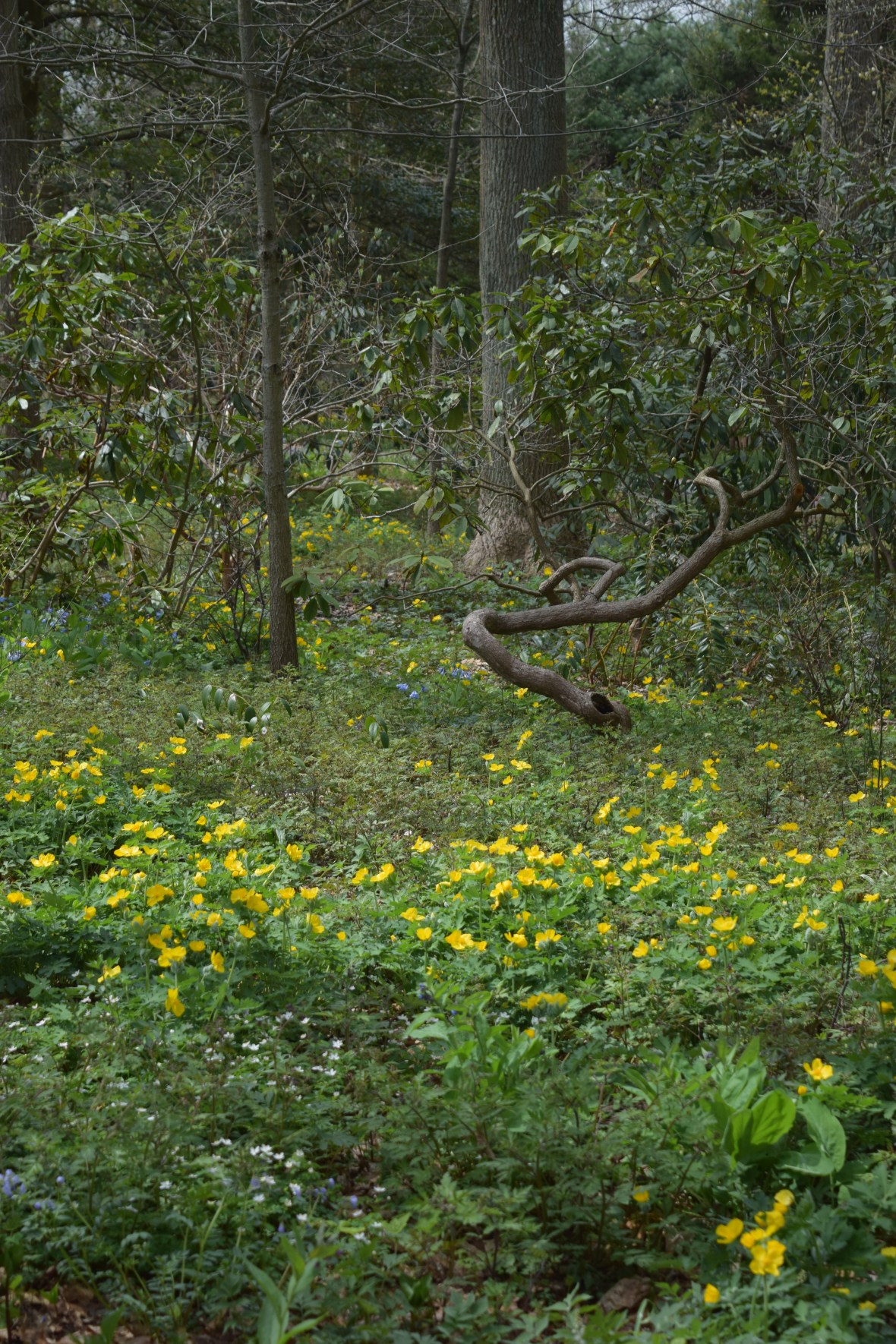
A former neighbor of mine disapproved of the Celandine Poppies, considering them weeds as they grew wild in the forest preserves and along roadsides. In this argument, the Mt. Cuba Center is on my side, thank you very much.

This is ‘Pink Pearl’ Rue Anemone (Thalictrum thalictroides), a variety developed by the Mt. Cuba Center. Part of the Center’s mission is to promote garden use of native wildflowers such as this delicate and lovely woodland ephemeral.

Wild Bleeding Heart (Dicentra eximia). Funny that the native Bleeding Heart is still a Dicentra, while the exotic Old Fashioned Bleeding Heart has been saddled with the rather clunky genus name Lamprocapnos (L. spectabilis).
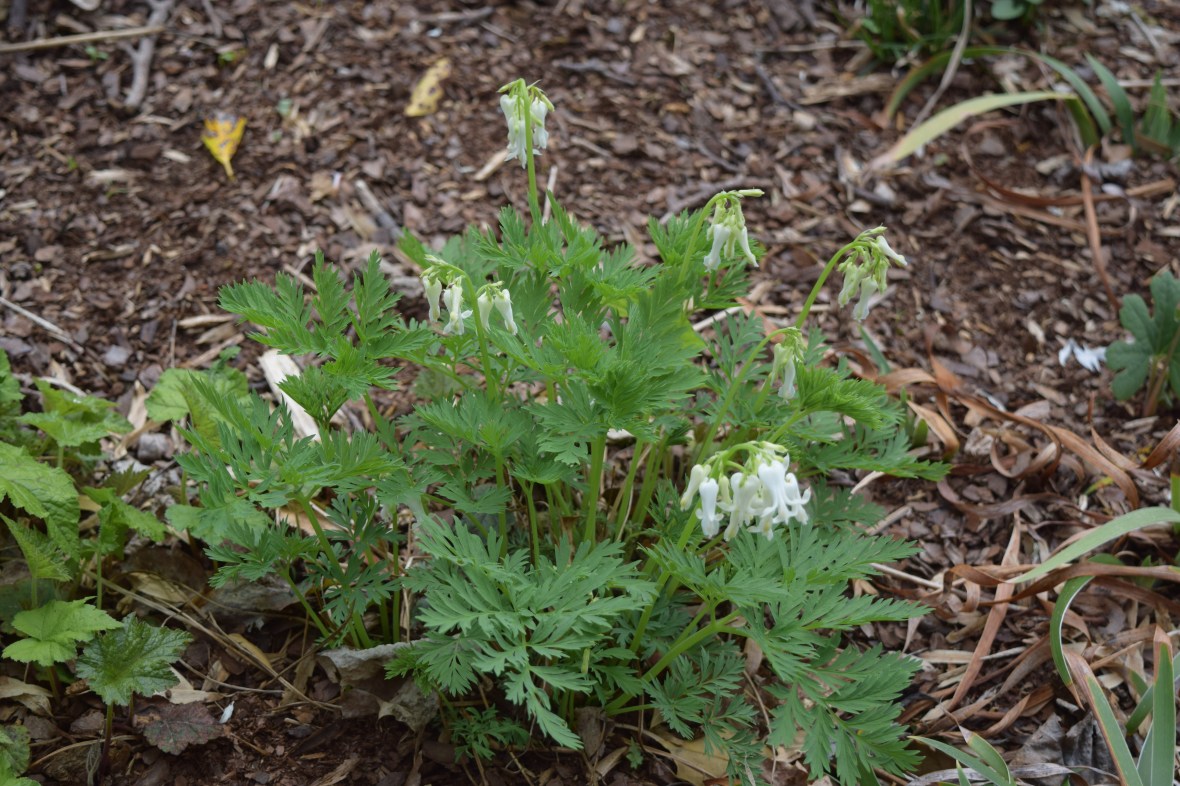
I think I prefer the White Wild Bleeding Heart (D. eximia var. ‘Alba’) over the pink.
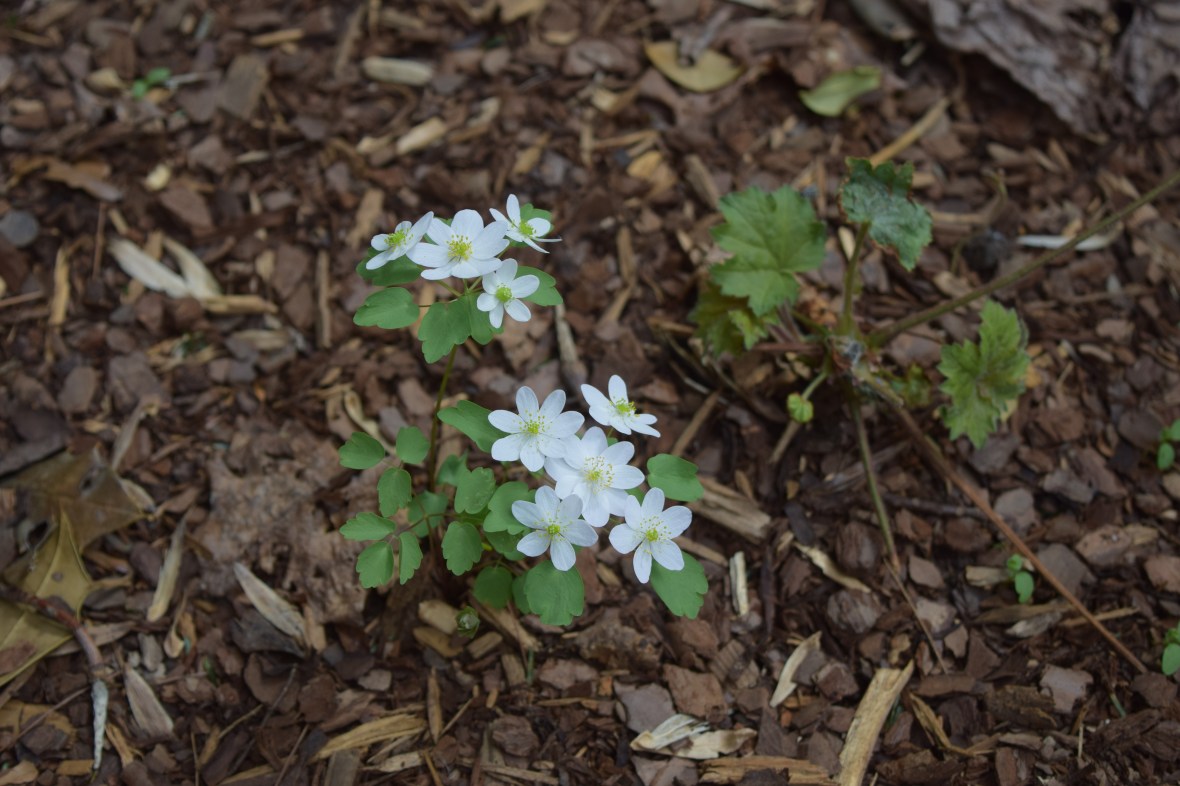
I’m pretty sure that this is also a Rue Anemone (T. thalictroides), and not a False Rue Anemone (Enemion biternatum). There is plenty of both at the Mt. Cuba Center.
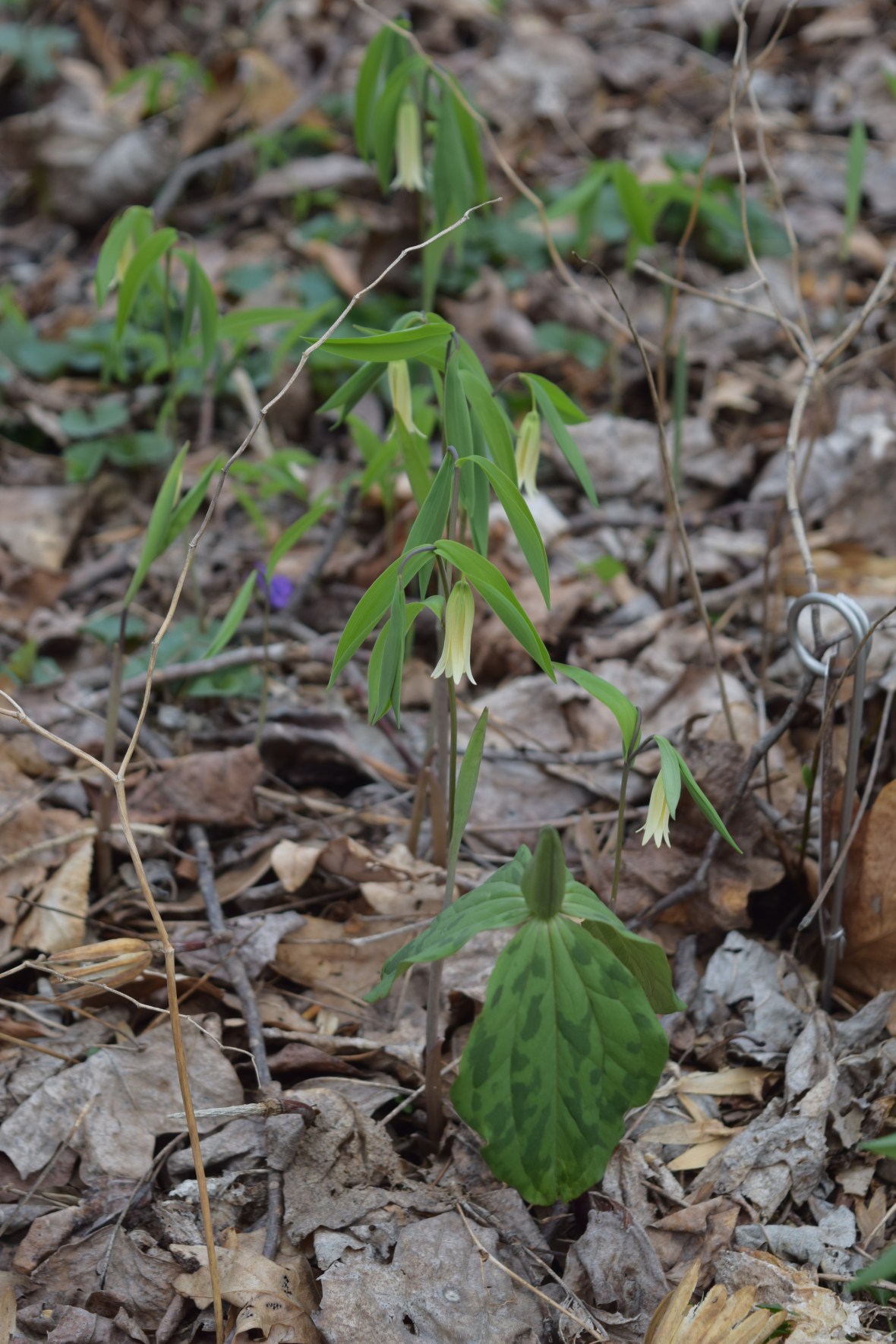
Sessile Bellwort (Uvularia sessilifolia) is a delicate species with pale yellow tubular flowers.

It’s cousin, Great Merrybells (U. grandiflora) appears more robust. We have several clumps of this wildflower in our garden. I love the dangling, bright yellow flowers. In my experience, the foliage of this plant will last all season in moist shade.

Twinleaf (Jeffersonia diphylla).
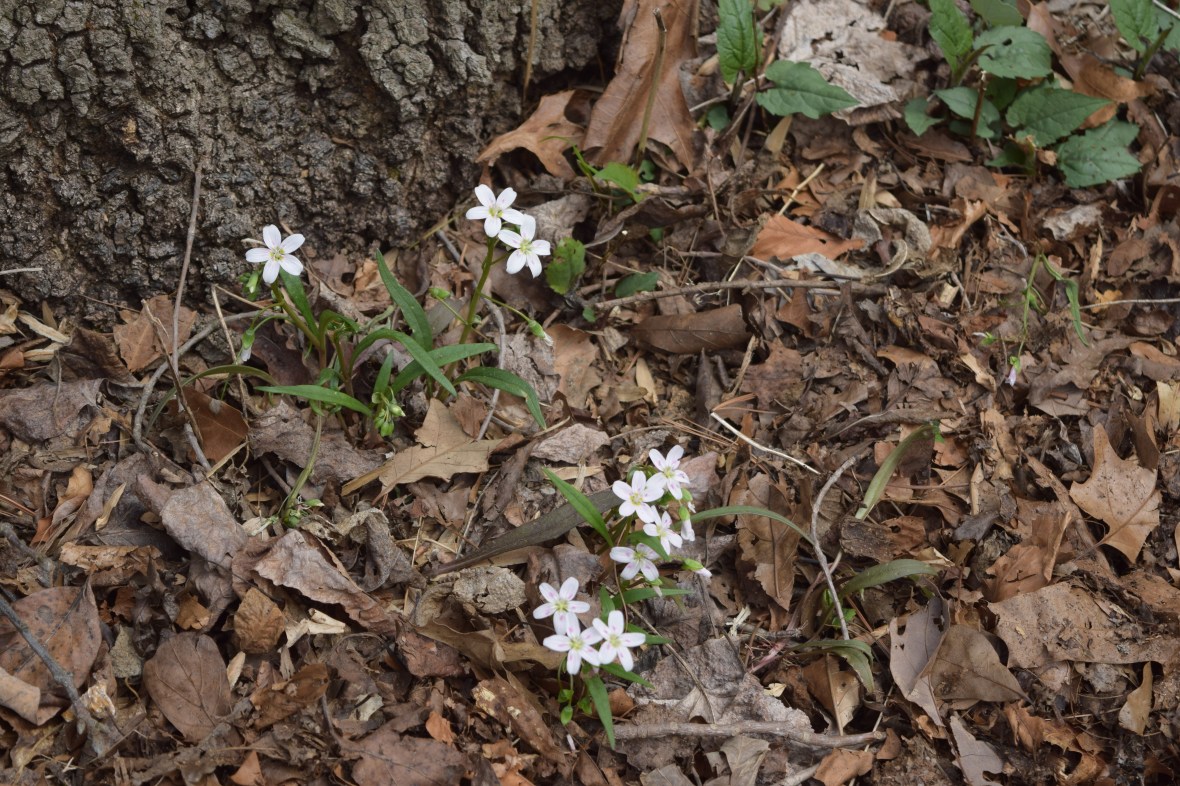
Spring Beauty (Claytonia virginica). This is a wildflower that can thrive even on land that has been used for logging or grazing. The tubers are edible, too.

I think this is Anemone nemerosa, but could it be A. canadensis? Both are wildflowers, but A. nemerosa is native to Europe.
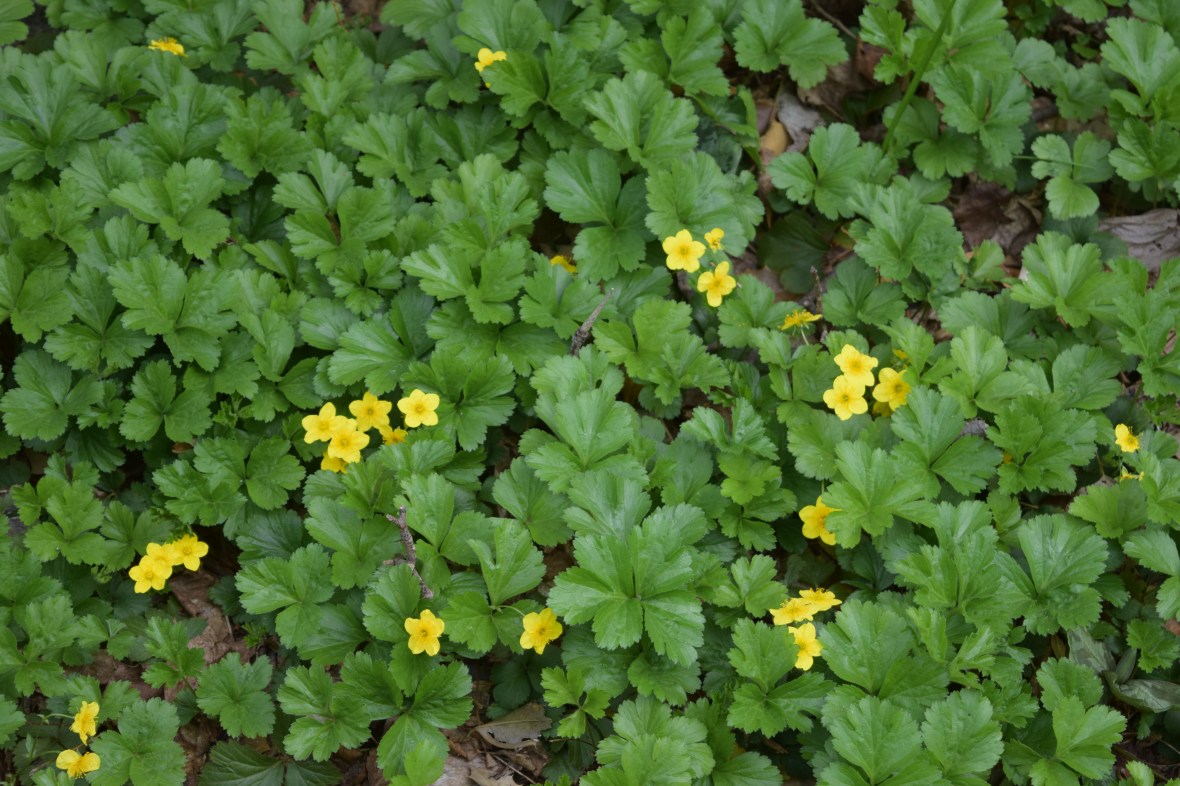
Barren strawberry (Geum fragarioides).

Allegheny Spurge (Pachysandra procumbens). This is a native cousin to the Japanese Spurge (P. terminalis), which in my opinion is way overused in American gardens. I’m not really fond of either one, though I the Allegheny Spurge has nicer flowers that are important to native pollinators.
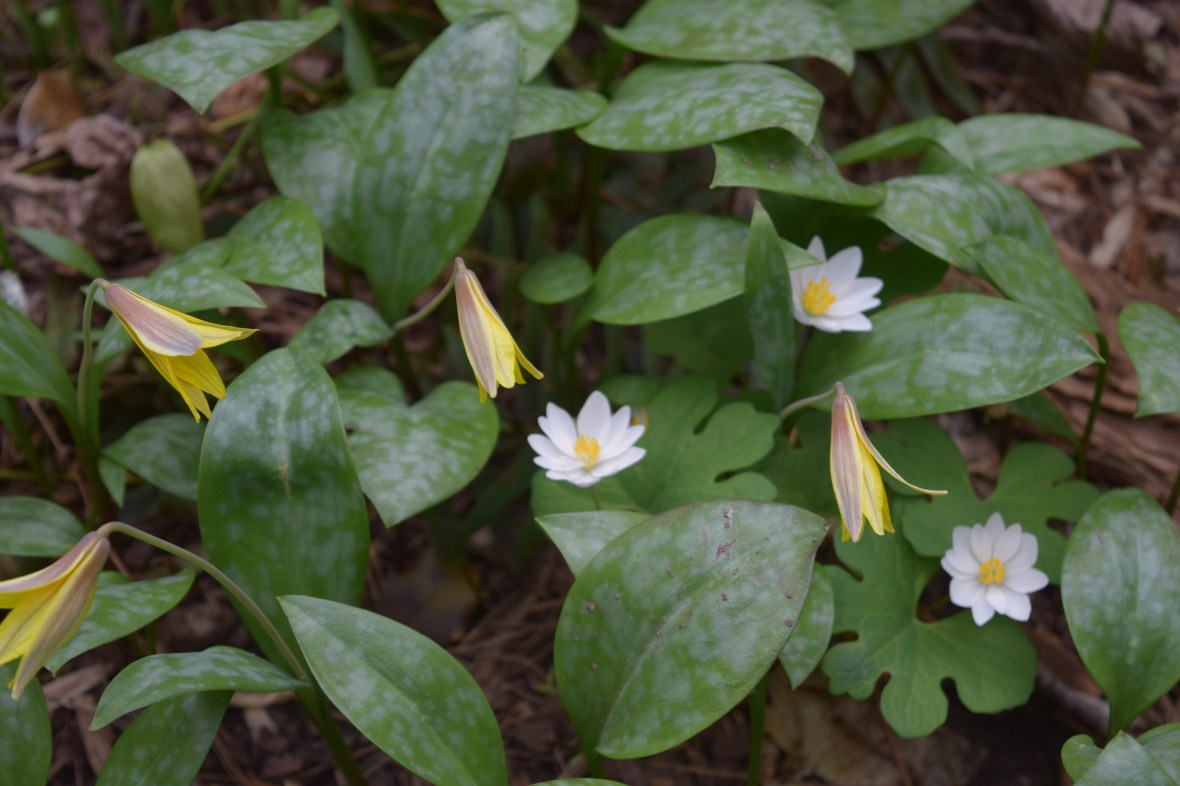
Bloodroot (Sanguinaria canadensis) growing through Yellow Trout Lily (Erythronium americanum).

We found big patches of tiny Bluets (Houstonia caerulia) growing through moss along the path. They are also called Quaker Ladies for reasons not clear to me.
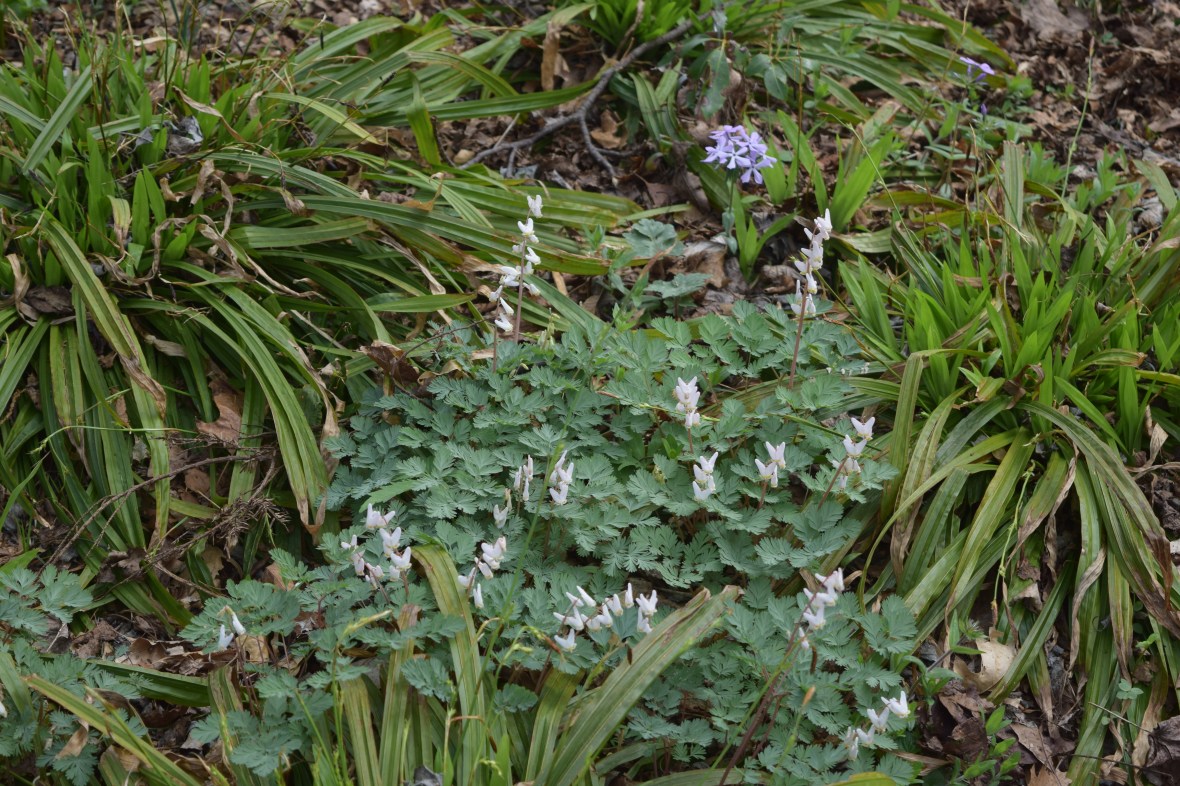
Dutchman’s Breeches (Dicentra cucullaria).

The ferns were just emerging at the time of our visit. There were plenty of intriguing fiddleheads to gaze at.

Few shrubs were in bloom though we did enjoy the fragrant flowers of Dwarf Fothergilla (F. gardenii).

Jacob’s Ladder (Polemonium reptans).
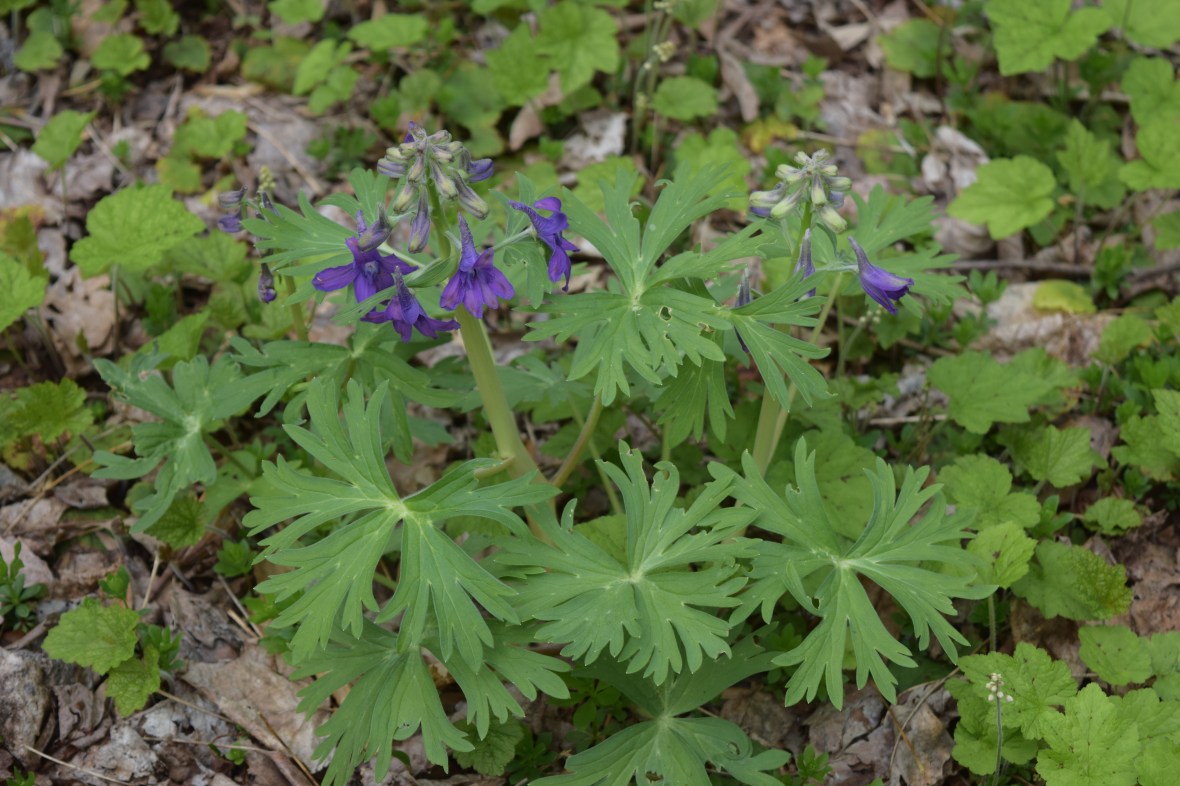
Dwarf Larkspur (Delphinium tricorne).
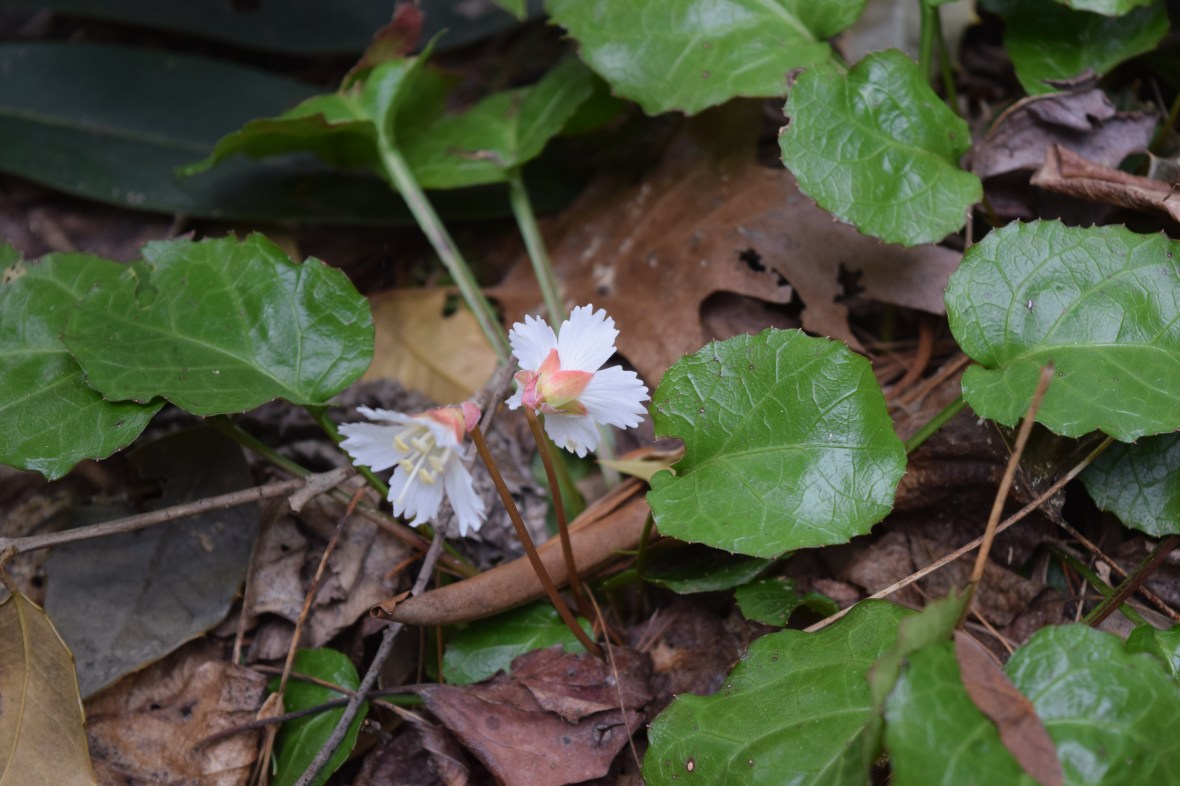
Oconee Bells (Shortia galacifolia) is a very rare wildflower, considered endangered in two states. Its native range runs from Georgia to Virginia, plus Tennessee. You have to get up close to appreciate its cuteness.
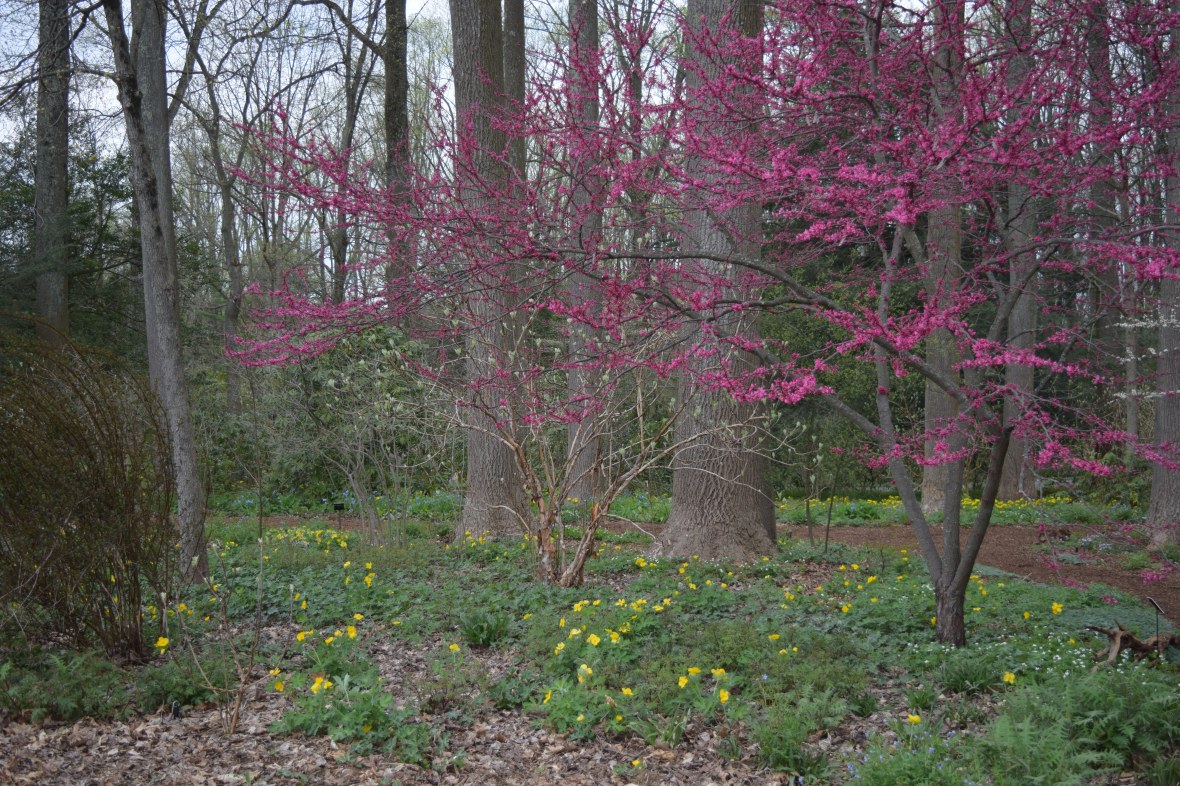
Redbuds (Cercis canadensis) were also in bloom.

As well as one species of Azalea – Plumleaf Azalea (Rhododendron prunifolium).

And finally, a Sharp Lobed Hepatica (H. acutiloba).
In April, Mt. Cuba Center is absolutely the place to be for people who love spring wildflowers. A visit is a chance to luxuriate in all the floral beauty, but also to recognize the work they are doing to conserve our botanical heritage.





Thanks. Heard the virtues of Mt. Cuba extolled last night at a talk on public gardens and I can see why in your posts.
It’s a great garden for lovers of North American native plants. Just a heads up, have you looked in your spam folder lately? I think my comments are going in there.
What a wonderful post! Now I want to visit. Your photos and descriptions are enticing! Thank you!
You’re welc0me! You should visit!
Now I know where lots of my woodland plants originate, what a wonderful place to visit.
I think you have a photo of Anemone nemerosa Vestal, the one with the beautiful centre, it is doing very well in the garden here.
Thanks for the ID. Mt. Cuba is not all native plants, I think A. nemerosa is European in origin.
I’ve never seen most of these wildflowers. They are truly lovely. I did recognize the redbud & larkspur. You know all the Latin names. I only know mine in pig Latin. Bummer. Thanks for the tour!
I’ve never seen botanical names in pig Latin. Sounds entertaining!
Thanks for the tour
You’re welcome!
Delights…every one of them!
Agreed!
Wow, there is a lot going on there. Love those spring ephemerals. I have never seen the Oconee Bells. Pretty little thing.
Yes, it is.
What a wonderful place to visit in spring! So lovely to see so many spring ephemeral delights all in one place. Such a great and important botanical haven.
We really enjoyed our time there.
Oh, just wonderful! Yes, a botanical haven.
Have you ever been to the Garden in the Woods in Framingham, Mass? It’s run by the NE Wildflower Society.
I have not. Someday, maybe!
I really need a walk in the woods. I love all the tiny little precious wildflowers.
You must have a whole different assortment in your area.
Your neighbor may bethinking of lesser celandine a pretty yellow flowered plant that is a non-native and terribly invasive.
No, he didn’t know the name, just the flower’s appearance.These were people who compulsively picked up all the twigs on their lawn because they didn’t like the “mess”.
I love all the native plants!!! And your knowledge of them thank you
You’re welcome!
I”d love to see that place in person!
I’ve never heard of the Oconee Bells
You would enjoy it.
What an wonderfully diverse range of flowers. Spring flowers are often so fleeting; it’s wonderful that you were able to enjoy them before they disappeared.
Yeah, the timing turned out to be very good.
Gorgeous! I really like that combination of Bloodroot and Yellow Trout Lilies. My garden is full of Japanese Pachysandra, since it was here when we moved in. It will have to be the next owner who takes it all out. Even though I’m moving more toward native plants, one good thing about Pachysandra is that it’s somewhat rabbit-resistant, but maybe the native Pachysandra is, too. All these photos are gorgeous, but I really like that one with the Redbud.
Thanks! Not sure if the native Pachysandra is rabbit-resistant. I have a bad attitude about the Japanese Pachysandra because it covered up half the yard at my parents’ house when I was growing up.
What a pretty sight. As you say, “a throng” of spring ephemerals.
I had to use thesaurus.com to come up with something a little unusual.
So nice to see all these native wildflowers doing so well, I really enjoyed your posts!
Too bad the deer and all sorts of other things have been so hard on the wildflowers around here. Maybe someday a little of it can be restored.
I really think there should be an aggressive approach to deer overpopulation. As it is we aren’t doing the deer or anybody else any favors.
Thank you for the tour of the Mount Cuba Center, Jason. I enjoy seeing all these spring flowers, many of which I have not seen since I lived back east.
You must have a lot of new favorites in Oregon where you live now.
What a beautiful collection of wildflowers, how I enjoyed them, especially pink pearl, wild white bleeding heart, twinleaf and the dwarf larkspur. There are many here I haven’t seen before.xxx
Some of them are pretty rare, though I would expect most would grow well in parts of the UK.